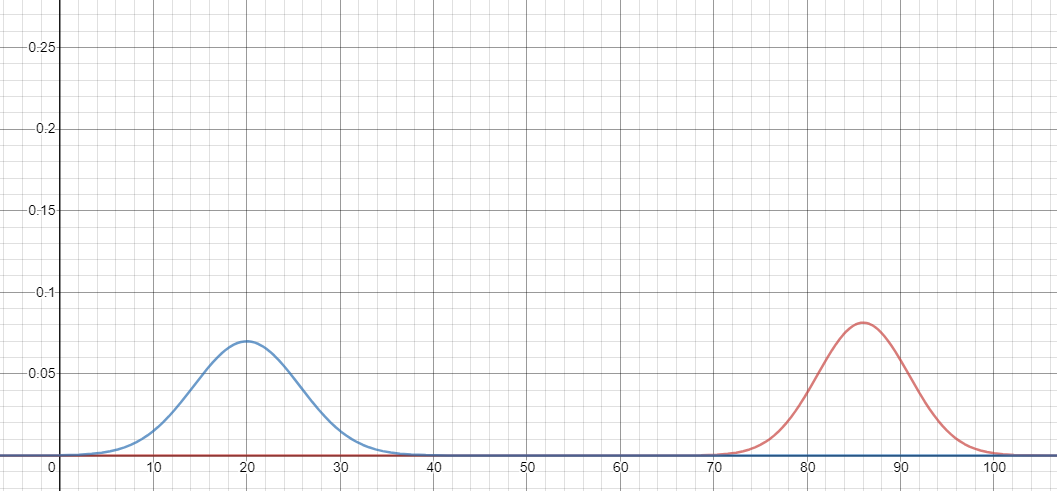To put a more fine point on it statistically, we can calculate an estimate of the probability density of the p-value of mana dropping in both cases and see how likely it is that the same probability applies to both.
The standard error in the first case is sqrt(pq/n) = sqrt(10x40/(50^3)) = 5.7 percent, roughly.
The standard error in the second case (and this is not really estimate-able by a normal distribution because the number of non-successes is less than 10) is sqrt(7x43/(50^3)) = 4.9 percent, roughly.
The modal p-value for a mana drop in both cases would be the experimental p-value - 20% with overdamage and 86% without overdamage.
This graph shows the findings. The horizontal axis is a possible value of the real likelihood, in percentage points, to get mana. The vertical axis is something called the “probability density” which is technically not, but basically serves as, an indicator of how likely it is that a particular guess for the real drop rate of mana is correct. (E.g. if you shade in the area of the blue curve from 10 % to 20 % on the horizontal axis, that area is the likelihood that the real mana drop rate is in that range of 10 to 20 %)
The significant thing is, this isn’t a guess at the fact that 50 runs is “not enough to show anything”. This analysis (although not perfect) shows the data as it is, and there’s pretty much 0 (so close to 0, in fact, that the online calculator displayed it as a pure 0) chance that the probability for mana is the same, because, say, in the range 40 to 50 percent, both graphs are basically flat, and there is no chance that the real drop rate lies there and so it is almost definitely wrong to say that this data shows nothing.
At the very least, it shows that some factor changed between each set of 50 runs, which significantly impacted mana’s drop rate. To confirm @Mynamerr 's intuition, even though he used another method which I wouldn’t have thought of but seems mathematically valid enough to me, to come to the same conclusion, the chance that this change in drop rates is just an anomaly caused by RNG is practically 0.


